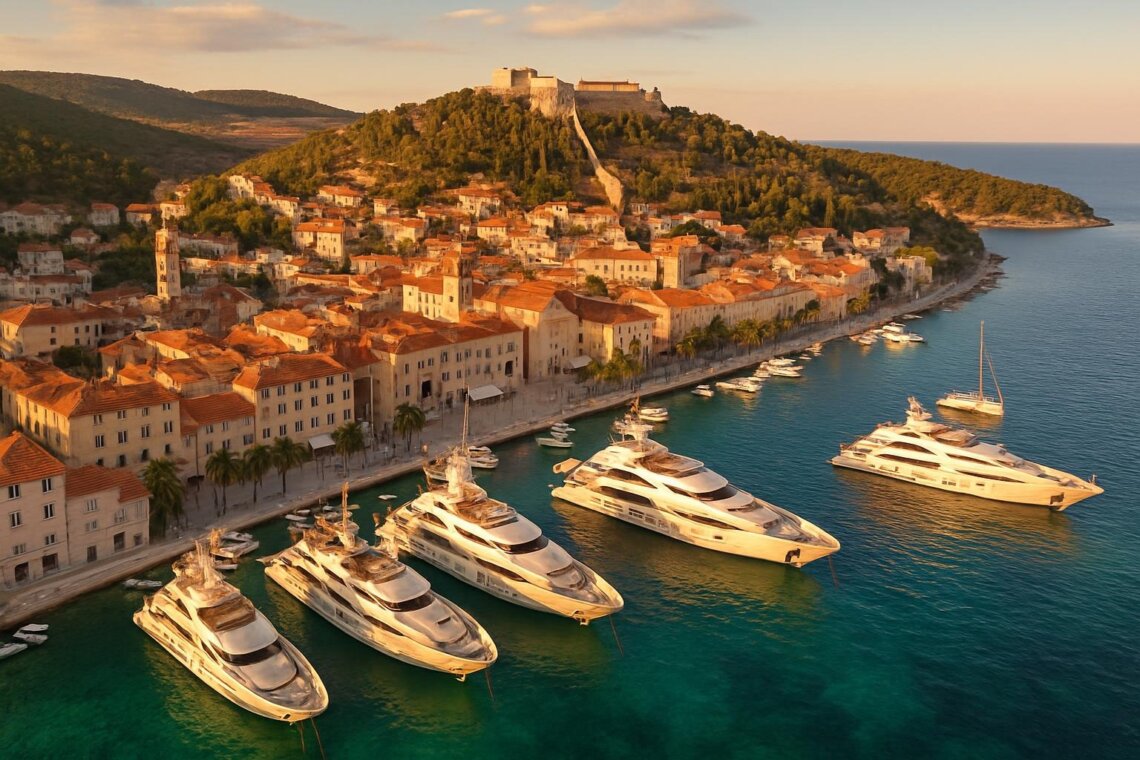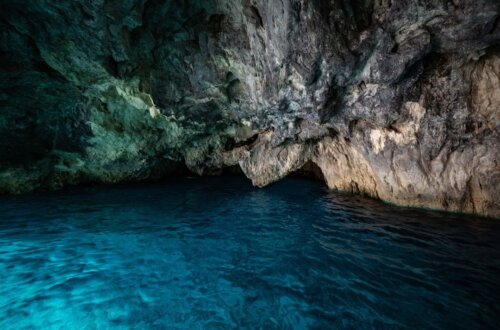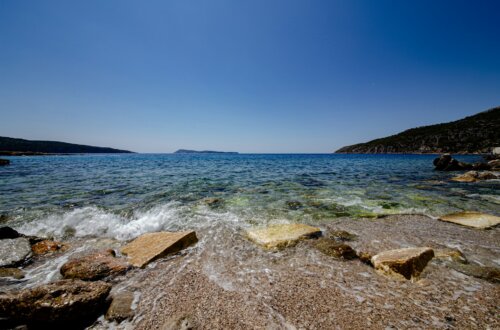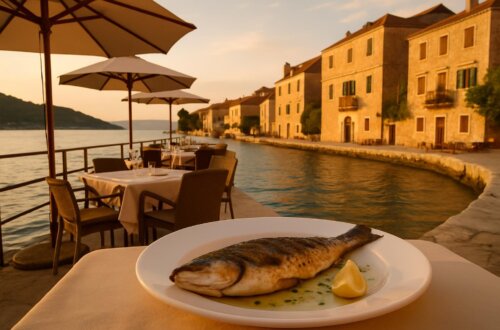
Is Hvar Worth Visiting? A Complete Guide to Croatia’s Sun-Soaked Island
Is Hvar Worth Visiting? A Complete Guide to Croatia’s Sun-Soaked Island
Introduction
Why is Hvar consistently ranked among the world’s most desirable island destinations? This sun-drenched Croatian jewel has captured the imagination of luxury travelers, party enthusiasts, and culture seekers alike, earning its reputation as one of the Mediterranean’s most coveted escapes. With over 2,724 hours of sunshine annually—more than any other Croatian island—Hvar promises an intoxicating blend of pristine beaches, vibrant nightlife, rich cultural heritage, and upscale Mediterranean lifestyle.
But beneath the glossy travel magazine covers and Instagram-worthy sunsets lies a more complex question: is Hvar truly worth the hype, or has it become an overpriced victim of its own success? This comprehensive guide will explore everything from hidden beach coves to ancient UNESCO sites, helping you determine whether this Adriatic paradise aligns with your travel dreams and budget.
The Allure of Hvar: Why It’s on Everyone’s Bucket List
Hvar’s meteoric rise to fame isn’t accidental. This 68-kilometer-long island has earned recognition from prestigious publications like Condé Nast Traveler and Lonely Planet, consistently appearing on “best islands” lists worldwide. The secret lies in its rare combination of natural beauty, sophisticated infrastructure, and cultural depth that few destinations can match.

The island’s global reputation stems from several key factors. First, its extraordinary climate delivers reliable sunshine and warm temperatures from April through October, making it perfect for extended seasons of outdoor activities. Second, Hvar has successfully positioned itself as a luxury destination without sacrificing its authentic Croatian character—a delicate balance many tourist hotspots struggle to maintain.
What truly sets Hvar apart is its versatility. Morning might find you exploring 2,400-year-old Greek ruins, afternoon lounging on secluded beaches accessible only by boat, and evening dancing at world-renowned beach clubs where international DJs perform against stunning coastal backdrops. This seamless integration of history, nature, and modern luxury creates an experience that satisfies diverse travel preferences within a single destination.
Hvar’s Stunning Beaches and Crystal-Clear Waters
Hvar’s coastline offers an impressive variety of beach experiences, from easily accessible town beaches to hidden coves that require adventurous spirits and boat access. The island’s geography creates diverse coastal environments, each offering unique charms and activities.
Dubovica Beach stands as Hvar’s crown jewel—a spectacular pebble beach nestled in a protected cove approximately 8 kilometers from Hvar Town. The beach’s distinctive feature is its dramatically clear waters that transition from emerald green near the shore to deep sapphire blue in deeper areas. The surrounding pine forests provide natural shade, while the beach bar offers refreshments without overwhelming the natural setting.
Pokonji Dol Beach, located on the Pakleni Islands just a short boat ride from Hvar Town, represents the island’s party beach culture. This organized beach features comfortable loungers, beach service, and a restaurant, but its real appeal lies in the pristine waters perfect for swimming and snorkeling. The beach offers easy boat access and stunning views back toward Hvar Town’s historic skyline.
For those seeking solitude, Malo Zaraće on the island’s southern coast provides an intimate beach experience. This small pebble beach requires a scenic 30-minute hike through Mediterranean vegetation, but rewards visitors with crystal-clear waters and complete tranquility. The lack of facilities means bringing supplies, but the pristine environment makes the effort worthwhile.
Water sports enthusiasts will find exceptional opportunities throughout Hvar’s waters. The clear visibility makes snorkeling rewarding, with rocky underwater formations hosting diverse marine life. Kayaking along the coastline reveals hidden coves and sea caves inaccessible by foot, while paddleboarding offers a peaceful way to explore calm bays during morning hours.
The Vibrant Nightlife Scene: Is It Worth the Hype?
Hvar Town’s transformation from sleepy fishing village to Croatia’s undisputed party capital represents one of the most dramatic shifts in Mediterranean tourism. The nightlife scene here rivals Ibiza or Mykonos, attracting international DJs, celebrities, and party enthusiasts from around the globe.
Carpe Diem Beach Club on Stipanska Island leads Hvar’s nightlife reputation. This world-famous venue combines pristine beach setting with cutting-edge sound systems and international DJ lineups. Day parties begin around noon with relaxed beach vibes, gradually intensifying through sunset into full-scale electronic music events lasting until dawn. The club’s boat shuttle service from Hvar Town adds to the exclusive atmosphere.
Hula Hula Bar, perched on rocks overlooking the sea, offers a different nightlife experience. This venue specializes in sunset cocktails and house music, attracting a sophisticated crowd seeking stylish ambiance over hardcore partying. The bar’s clifftop location provides spectacular sunset views, making it popular for early evening gatherings before the night’s main events.
The yacht party scene adds another dimension to Hvar’s nightlife. During summer months, luxury vessels anchor in Hvar’s harbor, hosting exclusive parties that blur the lines between private gatherings and public events. These floating venues attract celebrities and wealthy travelers, contributing to Hvar’s glamorous reputation.
However, Hvar’s party reputation creates a double-edged sword. While nightlife enthusiasts find world-class entertainment, travelers seeking peaceful Mediterranean escapes might find the scene overwhelming. The party culture peaks during July and August, when noise levels and crowds can significantly impact the island’s otherwise serene atmosphere.
History and Culture: More Than Just Beaches and Bars
Beneath Hvar’s modern party reputation lies layers of fascinating history spanning over 2,400 years. The island’s strategic Adriatic position made it a crucial stop for ancient Greeks, Romans, Venetians, and Austro-Hungarians, each civilization leaving distinctive architectural and cultural marks.

Hvar Town showcases remarkable Venetian architecture, with the main square (Trg Svetog Stjepana) serving as one of Croatia’s most beautiful public spaces. The Hvar Cathedral, dating from the 16th century, dominates the square with its distinctive bell tower and baroque facade. The cathedral houses valuable Renaissance artworks and represents the island’s long Catholic heritage.
The Fortica fortress, dramatically perched above Hvar Town, offers both historical significance and spectacular panoramic views. Built by the Venetians in the 13th century and expanded over subsequent centuries, the fortress demonstrates the island’s strategic military importance. The climb to the fortress takes approximately 20 minutes, but rewards visitors with sweeping views across the Pakleni Islands and mainland Croatian coast.
The UNESCO-protected Stari Grad Plain represents one of Europe’s best-preserved ancient agricultural landscapes. This 2,400-year-old field system, established by Greek colonists, continues functioning today with original stone walls and property boundaries intact. The plain demonstrates remarkable continuity between ancient and modern agricultural practices, earning its World Heritage designation.
Cultural events throughout summer celebrate Hvar’s heritage while embracing contemporary arts. The Hvar Summer Festival presents classical music, theater, and dance performances in historic venues, creating magical atmospheric experiences. Traditional festivals like the Lavender Festival celebrate the island’s agricultural heritage, offering authentic cultural experiences beyond the party scene.
Outdoor Adventures and Day Trips from Hvar
Hvar’s diverse landscape and strategic location create exceptional opportunities for outdoor adventures and island-hopping excursions. The island’s combination of coastal and inland environments provides activities for various fitness levels and interests.

The Pakleni Islands archipelago, just off Hvar’s southwestern coast, offers the region’s premier day trip destination. This chain of 16 small islands and islets provides diverse experiences from secluded beaches to upscale beach clubs. Boat trips can be customized for different interests—families might prefer calm swimming bays, while party groups gravitate toward beach clubs with music and cocktails.
Palmižana, the largest Pakleni island, combines natural beauty with sophisticated amenities. The island features several beaches, walking trails through pine forests, and the renowned Palmižana Beach Club. The botanical garden, established over a century ago, showcases Mediterranean and exotic plant species in a peaceful setting perfect for afternoon exploration.
Hiking enthusiasts will discover surprising diversity in Hvar’s inland areas. The island’s highest point, Sveti Nikola (628 meters), offers challenging hiking with spectacular summit views. More moderate trails wind through lavender fields, olive groves, and traditional stone villages, providing authentic glimpses of rural Croatian life.
Hvar’s central location makes it an ideal base for exploring nearby islands. Vis Island, famous for its Blue Cave and military history, lies just 20 nautical miles southwest. Brač Island, renowned for Zlatni Rat beach and stone quarries, sits northeast of Hvar. Korčula, Marco Polo’s alleged birthplace, offers medieval architecture and wine culture slightly further south.
Wine tourism represents a growing outdoor activity sector. Hvar’s unique microclimate and limestone soils produce distinctive wines, particularly the indigenous Plavac Mali red variety. Vineyard tours combine scenic drives through terraced landscapes with tastings at family-owned wineries, offering authentic cultural experiences away from coastal crowds.
Food and Wine: A Taste of Authentic Dalmatia
Hvar’s culinary scene masterfully balances traditional Dalmatian flavors with contemporary presentation, creating dining experiences that satisfy both authenticity seekers and modern food enthusiasts. The island’s geographic position and historical influences produce a distinctive cuisine emphasizing fresh seafood, aromatic herbs, and locally-produced wines.
Traditional specialties reflect Hvar’s maritime heritage and agricultural abundance. Gregada, a traditional fish stew, combines locally caught white fish with potatoes, onions, and herbs in a simple preparation that highlights ingredient quality. Black risotto (crni rižot), colored with cuttlefish ink, represents another signature dish showcasing the island’s seafood traditions. Fresh seafood preparation emphasizes grilling with olive oil, garlic, and rosemary—simple techniques that preserve natural flavors.
Hvar’s wine culture extends back over 2,400 years to Greek colonization. The island’s unique combination of limestone soils, Mediterranean climate, and sea breezes creates ideal conditions for viticulture. Plavac Mali, Croatia’s most important indigenous red variety, thrives on Hvar’s south-facing slopes, producing robust wines with distinctive mineral characteristics.
Local olive oil production represents another culinary highlight. Ancient olive groves, some containing trees over 500 years old, produce exceptional extra virgin olive oils with complex flavor profiles reflecting the island’s terroir. Many restaurants feature local oils prominently, offering tastings alongside traditional bread and local cheeses.
Dining venues range from waterfront fine dining establishments to rustic konobas (traditional taverns) hidden in inland villages. Upscale restaurants in Hvar Town offer sophisticated interpretations of traditional dishes with international influences and premium wine selections. Rural konobas provide authentic experiences with family recipes, local ingredients, and personal service that creates memorable cultural encounters.
The island’s commitment to quality extends to modern establishments embracing farm-to-table concepts. Many restaurants maintain relationships with local farmers, fishermen, and producers, ensuring ingredients reflect seasonal availability and regional character. This approach creates menus that change throughout the year, encouraging visitors to experience Hvar’s culinary diversity across different seasons.
Practical Considerations: Is Hvar Right for You?
Understanding Hvar’s practical aspects—costs, timing, accessibility, and target demographics—is crucial for determining whether this destination aligns with your travel expectations and budget. The island’s popularity and upscale positioning create specific considerations that potential visitors should evaluate carefully.

Cost considerations represent Hvar’s most significant practical challenge. Accommodation prices during peak season (July-August) rank among Croatia’s highest, with luxury hotels commanding €300-500+ per night. Mid-range options range €150-250 nightly, while budget accommodations start around €80-100. Booking well in advance provides better rates, but prices remain substantially higher than other Croatian islands.
Dining costs reflect the island’s upscale positioning. Fine dining restaurants charge €30-50+ per person for dinner, while casual establishments range €15-25. Even simple beach bars charge premium prices due to limited competition and captive audiences. Budget travelers should expect daily food costs of €40-60 per person, while luxury seekers might spend €100+ daily.
Transportation to Hvar requires advance planning. Ferry connections from Split operate regularly during summer but can experience significant delays during peak periods. The journey takes 1-2 hours depending on vessel type, with catamarans offering faster but more expensive service. Advance reservations are essential during July-August, particularly for travelers with vehicles.
Timing significantly impacts the Hvar experience. Peak season (July-August) offers the most activities, events, and energy but also brings crowds, higher prices, and limited accommodation availability. Shoulder seasons (May-June, September-October) provide better weather-to-cost ratios with moderate temperatures, fewer crowds, and lower prices while maintaining most services and activities.
Hvar appeals strongly to specific traveler demographics. Young adults and couples seeking nightlife, luxury, and sophisticated beach experiences find the island ideal. History enthusiasts appreciate the cultural sites and architectural heritage. Outdoor adventurers enjoy water sports, hiking, and island-hopping opportunities. Wine lovers discover exceptional local varieties and scenic vineyard settings.
However, certain traveler types might prefer alternative destinations. Families with young children may find the party atmosphere and high costs challenging. Budget backpackers face limited affordable options and expensive daily costs. Travelers seeking complete tranquility might be overwhelmed by summer crowds and nightlife noise. Senior travelers preferring gentle activities might find the scene too energetic and youth-focused.
Pros and Cons of Visiting Hvar
Pros:
- Exceptional Climate: Over 2,700 annual sunshine hours create reliable warm weather from April through October
- Stunning Natural Beauty: Crystal-clear waters, hidden coves, and dramatic coastal landscapes provide spectacular settings
- World-Class Nightlife: International DJs, beach clubs, and yacht parties create unparalleled party experiences
- Rich Cultural Heritage: 2,400 years of history with UNESCO sites, Venetian architecture, and traditional festivals
- Luxury Infrastructure: High-end accommodations, sophisticated dining, and premium services cater to discerning travelers
- Adventure Opportunities: Water sports, hiking, wine tours, and island-hopping provide diverse activities
- Strategic Location: Easy access to other Croatian islands and coastal destinations
Cons:
- High Costs: Premium pricing for accommodation, dining, and activities significantly impacts budgets
- Summer Crowds: July-August overcrowding affects beach access, restaurant availability, and overall tranquility
- Party-Heavy Reputation: Nightlife noise and party culture may overwhelm travelers seeking peaceful experiences
- Limited Budget Options: Few affordable accommodations or dining choices restrict access for budget travelers
- Transportation Challenges: Ferry delays and limited connections during peak periods create travel complications
- Commercialization: Tourism development has altered traditional island character in some areas
This balanced assessment helps potential visitors understand both Hvar’s exceptional attractions and legitimate challenges, enabling informed decisions based on individual preferences and circumstances.
Conclusion: So, Is Hvar Worth Visiting?
After examining Hvar from multiple perspectives—its stunning beaches and vibrant nightlife, rich history and cultural depth, outdoor adventures and culinary excellence, practical considerations and cost implications—the answer to “Is Hvar worth visiting?” ultimately depends on your travel style, budget, and expectations.
For luxury travelers, nightlife enthusiasts, and culture seekers willing to pay premium prices for exceptional experiences, Hvar delivers unparalleled value. The island’s unique combination of natural beauty, sophisticated infrastructure, and diverse activities creates memories that justify the investment. The reliable sunshine, crystal-clear waters, and world-class amenities provide the foundation for truly special Mediterranean experiences.
However, budget-conscious travelers, families with young children, or those seeking complete tranquility might find better value and satisfaction on other Croatian islands like Korčula, Vis, or the quieter parts of Brač. These alternatives offer authentic Croatian experiences without Hvar’s premium pricing and party atmosphere.
The key to Hvar satisfaction lies in realistic expectations and proper timing. Visit during shoulder seasons for better prices and fewer crowds while maintaining excellent weather. Book accommodations well in advance, budget appropriately for higher costs, and embrace both the cultural heritage and modern luxury that make Hvar unique.
Ultimately, Hvar represents one of the Mediterranean’s most successful transformations from traditional island community to world-class destination. Whether this transformation aligns with your travel dreams depends on your personal priorities, but there’s no denying that Hvar offers experiences impossible to replicate elsewhere in Croatia or the broader Mediterranean region.




